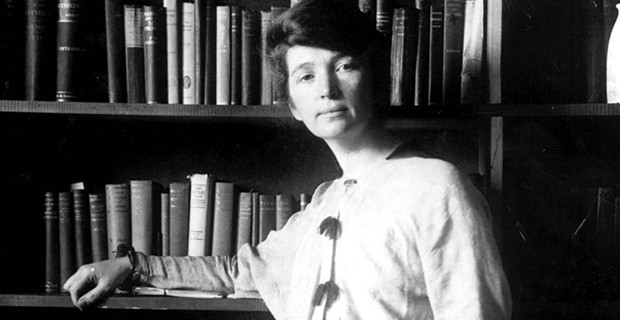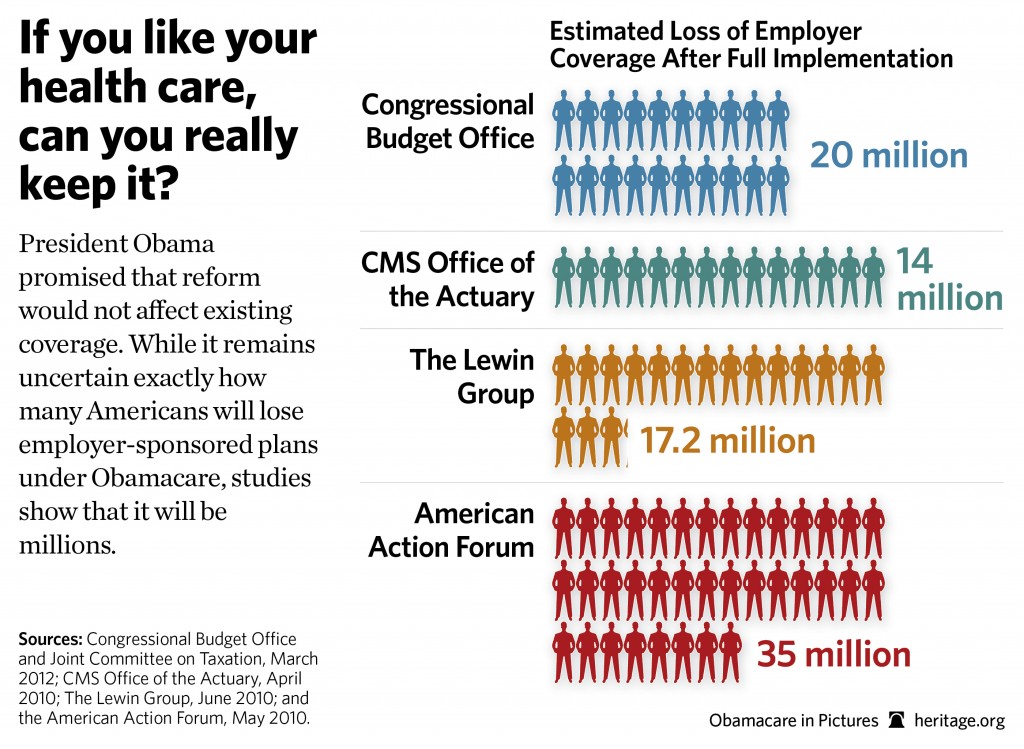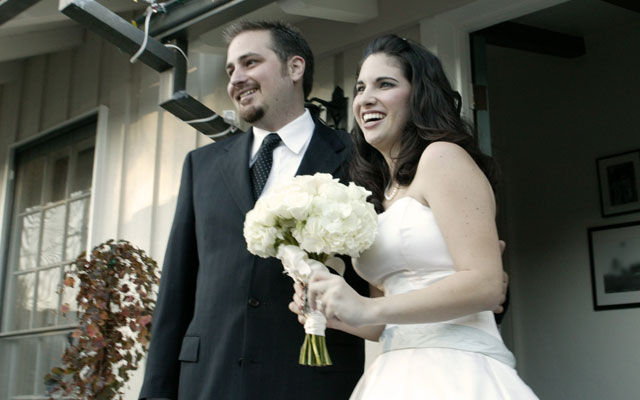Despite the fact that women have “almost unlimited access to
abortion, as evidenced by abortion rates which are nearly double the
national average,” as Nolte noted in a letter to an Empire State
newspaper this week, the governor’s agenda includes expanding access to
abortion in New York State, including by allowing non-physicians to
perform abortions.
“Women faced with unplanned pregnancies want and need access to
life-affirming alternatives to abortion, less bureaucratic obstacles to
adoption, more support and resources to enable them to bear their
children and raise their families with dignity,” she implored.
“Women given a poor prenatal diagnosis need love and support as they
parent their child through whatever months of life that child may have,
not pressure to end the life of their child. Most of my post-abortive
patients tell me that they didn’t want to ‘choose abortion’ but did so
only because they felt like they ‘had no other choice,’” she shared.
Dr. Nolte begs New York lawmakers to challenge the
governor’s cheerleading — literally, there was “choice!” chanting from
the governor during his State of the State address
—
and
to consider alternative legislative moves, to not buy into the
conventional narrative that insists that it is acceptable to equate
“women’s health” and freedom with a radical safe, legal, and seemingly
preferred-abortion mindset.
Dr. Nolte will be joined by fellow doctors in Albany today urging the
reconsideration of the governor’s “reproductive health” agenda. She is
protesting the agenda with the confidence that New Yorkers don’t
consider abortion expansion a priority for New York.
A poll from the Chiaroscuro Foundation makes this clear. Even
pro-choice Democrats think the abortion rate in New York is alarmingly high.
Not for the first time, the best friend of a radical reproductive-health agenda is misinformation, confusion, spin.
Dr. Nolte talks about the legislation and what drives her to Albany in an interview with
National Review Online.
KATHRYN JEAN LOPEZ: Why are you protesting the governor’s agenda with regard to abortion?
DR. ANNE NOLTE: Though Governor
Cuomo has not yet proposed specific legislation, his comments to the
media suggest he plans to introduce legislation similar to the bill
commonly referred to as the “Reproductive Health Act,” which could be
used to allow abortion even of an infant who can survive outside of the
womb and which would allow non-physicians to perform invasive surgical
abortions in medical clinics outside of a hospital setting.
I, like many of my colleagues, believe that such legislation makes
abortion less safe for women. We worry it will increase the use of
late-term abortion when this type of abortion is not necessary to
protect a woman’s health. And it devalues the lives of our second
patient — the infant in the womb.
We are also concerned about defining abortion as a “right,” which the
Reproductive Health Act would do. Does this mean that doctors and
institutions which refuse to provide abortion for religious or moral
reasons will be charged with “discrimination” for failing to respect
this right? Will we be fined? Lose our licenses? These are real and
serious concerns that lawmakers in Albany must not gloss over.
LOPEZ: Aren’t you doing a disservice to women, and even children, in New York by opposing this?
DR. NOLTE: Quite the opposite.
Many physicians oppose abortion because we have all cared for women who
have suffered physical or emotional complications from a past abortion.
The risk of physical complications from a surgical abortion increases,
the later in pregnancy that these procedures are performed. If the
“termination” of a pregnancy after 24 weeks is required to protect a
woman’s health, this can be accomplished by inducing labor or performing
a C-section – options that are safer than late-term abortion when a
woman’s life or health is truly at risk and that preserve the life of
the infant. Both mother and child are better off when we recognize that
late-term abortion is not good health care.
Further, as physicians who care for pregnant women, we have two patients. Women trust us
because of this fact — that we are dedicated to preserving
both
the health of the mother and the health of the child in her womb. When
we provide care, our goal is to provide the best care to both of these
patients, no matter what the circumstance — not to pit mother against
child for the sake of advancing a political agenda.
LOPEZ: Why do you believe this legislation represents ”abortion expansion”?
DR. NOLTE: The rate of abortion
in New York State is double the national average. In some parts of New
York City, over 60 percent of pregnancies end in abortion. It is
estimated that 90 percent of children with Down Syndrome are aborted,
and many abortions after viability occur because the child was given a
poor diagnosis, such as Down Syndrome. All of these statistics represent
the current state of affairs under current New York law.
With staggering statistics like these confirming that there is no
lack of access to abortion in New York State, why would we seek to allow
less qualified, non-physician health-care providers, with less surgical
training, and less experience managing complications of surgery, to
perform abortions? Why would we allow outpatient abortion clinics to
perform late-term abortions, with the inherently higher risk of
complications, rather than continue to require that high-risk procedures
be performed in the safety of a hospital? The Reproductive Health Act,
as it is currently written, does both of these — expanding access to
abortion, while decreasing its safety. These regulations represent a
step backward, to more abortion and less safety for women.
LOPEZ: What about expanding late-term abortions?
DR. NOLTE: Let’s be clear. The
RHA and Governor Cuomo’s comments both clearly indicate that they want
to allow abortion through all 40 weeks of pregnancy if it is necessary
to protect the “health” of the mother. This is deceptive. As I already
mentioned, any complications of pregnancy after 24 weeks’ gestation can
be managed safely by delivering the living child, whether by induction
of labor or by C-section. The death of the child is never medically
necessary to preserve the mother’s health. “Health” however has been
broadly interpreted to mean not just serious, life-threatening
conditions, like high blood pressure or pre-eclampsia, but also any
disturbance of “mental health.” This essentially allows a woman to
terminate her pregnancy through all 40 weeks of pregnancy for any reason
that “upsets her mental health.” As a single example, one young woman,
who spoke before the New York City Council a few years ago, testified
that she was pressured at an abortion clinic to say she was “depressed”
by her pregnancy, because it would be the only way for her to get a
legal abortion at 25 weeks’ gestation.
LOPEZ: “Choice” was the rallying
cry of the governor during his State of the State address when he
talked about this. Aren’t you lending support to a “war on women” that
Catholics and pro-life folks are so often accused of waging?
DR. NOLTE: Again, we feel that
the opposite is true. Abortion harms women. In my family practice over
the past seven years, I have asked every woman who has had an abortion
if she has experienced any negative effects, physical or emotional. I
have been surprised by the number who have had physical complications,
as I was always taught that these were “rare.” But besides that, thus
far only one woman has said that she did not regret her abortion.
Many have experienced depression, anxiety, flashbacks, and regret.
Some live in fear of their spouse or living children finding out about
an abortion they had as a teenager. Some are infertile and are tormented
by the knowledge that they aborted the only child they will ever have.
Some terminated a pregnancy for a birth defect, and mourn the loss of
the precious time they could have had to parent the child for as long as
her natural life would have lasted. Thousands of women have sought help
for the emotional trauma caused by their abortion.
Reasonable limits on abortion are not promoted to take away women’s
rights, wage war on women, or harm them. They are actually protective of
women.
For instance, prohibiting late-term abortions protects women who have
been given a poor prenatal diagnosis from the intense pressure they
often experience from peers and even from the medical profession to end
their pregnancy. When supported and given the chance, many women whose
unborn child is given a life-limiting diagnosis want to parent the child
during whatever days, weeks, or months of life that child may have.
When abortion is not an option, it allows the whole medical team to turn
their attention to what they do best —
caring for mother and child in a difficult circumstance. This is evidenced by the success of programs such as perinatal hospice.
Another example: Requiring a waiting period, as some states do, gives
women time to think through and process the roller coaster of emotions
they experience when they first discover that they are unexpectedly
pregnant.
As physicians, we are taught that the worst time to make a decision
is when you are in a crisis. It takes time for emotions to settle and
for a person to rationally weigh her options in the context of her
personal values. A waiting period allows women to make a choice they can
live with and not one dictated by the impulse of fear. It also protects
them from unscrupulous providers of abortion who may take advantage of
this vulnerable state of the woman for financial gain.
These are just a few examples, but they demonstrate that it is
reasonable to limit abortion — something with which most Americans
agree.
LOPEZ: Your press conference is
being held in conjunction with the New York State Catholic Conference;
Cardinal Dolan has urged the governor to rethink his agenda here; and
yours is a Catholic medical practice. Why should Catholic doctrine have
anything to say about Empire State public policy?
DR. NOLTE: It is not Catholic
doctrine that motivates the concern of the physicians speaking at our
press conference. In fact, we will be joined by other Christian and
Jewish colleagues.
What motivates us to speak out is our experience working with women
and our conviction that abortion is not good for women. Women do not
need greater access to abortion in New York State, they need greater
access to prenatal care, less burdensome adoption laws, community
support when they are given an adverse diagnosis, working conditions
that allow them to work
and parent their children, and protection from pregnancy discrimination.
LOPEZ: Do you feel a particular obligation as a doctor to speak up in regard to the push for the Reproductive Health Act?
DR. NOLTE: I do. When I listen
to politicians speak about abortion, I am struck by how little they seem
to understand about the real experiences and needs of women with
unplanned pregnancies. Sometimes it seems like they care more about
advancing a political agenda than about actually protecting women. I am
not an expert in law or politics, but I know what my patients have told
me — and what they have told me has convinced me that more abortion is
not good for women.
LOPEZ: You live in a state that
is not exactly a bastion of pro-life activism. Shouldn’t you just let
this go? Why is it worth fighting for something else?
DR. NOLTE: Despite all of the
rhetoric and all of the strong emotions that surround any discussion of
abortion, I have witnessed the negative effects of abortion on women.
Women who are suffering because of a past abortion deserve to have their
suffering acknowledged, and women who are contemplating abortion
deserve to know that it might really have a negative impact on their
lives. I work in women’s health. It is my job to stand up for them.
LOPEZ: In your daily work, what
are the needs of women? Are there ways the state could help with any of
them? Perhaps as part of a governor’s reconsidered women’s rights and
health agenda?
DR. NOLTE: We should support
women who are pregnant with access to good prenatal care. Provide
support for the wonderful network of pregnancy centers trying to help
women with housing, clothing, parenting classes, etc., equal to the
support that the state provides to abortion clinics. Simplify adoption
laws and make the state more adoption-friendly. Fund medical centers
that want to provide perinatal hospice services, grief counseling, and
support to families given a poor prenatal diagnosis. Strengthen
pregnancy-discrimination laws. Encourage employers to create a work
environment that allows parents to parent their children and doesn’t
penalize parents when a child becomes ill. New York lawmakers need to
consider a healthier approach to policy than affects women and children
in our state. Expanding abortion access in a state with such high rates
can’t be a priority.
Source National Review on Line























